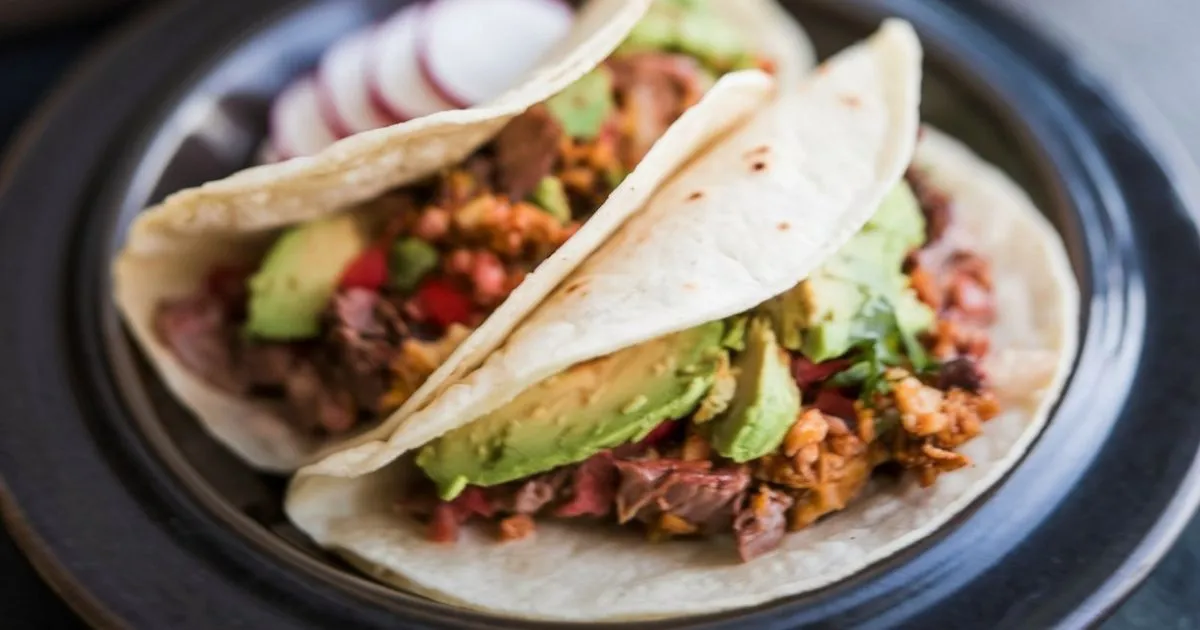Mexican taquerías celebrate tacos de lengua for their melt-in-your-mouth tender texture. These delectable tacos vanish quickly at traditional posadas and social gatherings. The beef tongue needs to simmer patiently for 3-4 hours with garlic, onion, and bay leaves until it reaches the perfect tenderness.
A single beef tongue yields 18-24 tacos, which makes it an excellent choice for larger groups. My experience as a chef taught me that authentic tacos de lengua’s magic extends beyond the cooking method. The step-by-step process creates these flavorful tacos, and traditional toppings like fresh cilantro, chopped onions, and lime improve each bite significantly.
Selecting and Preparing the Perfect Beef Tongue
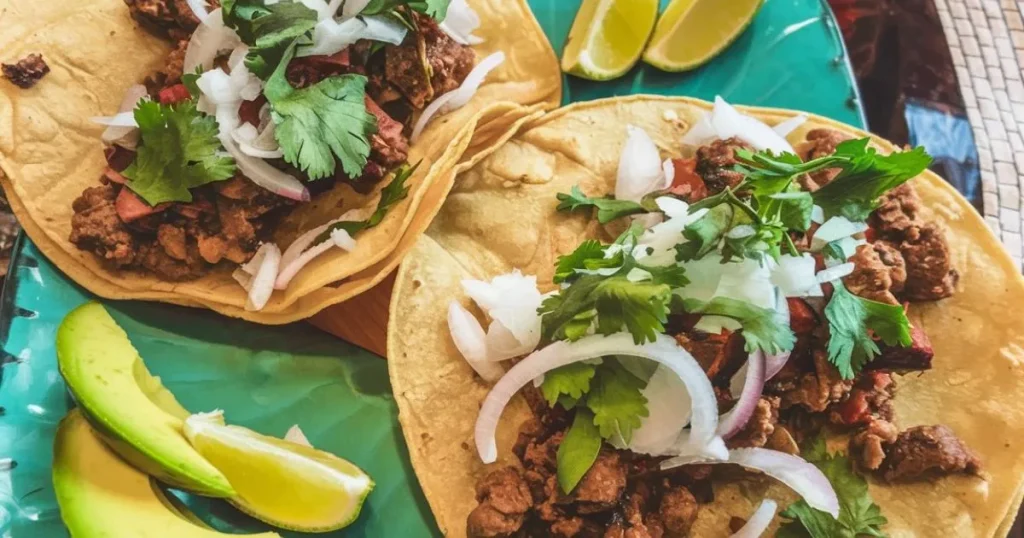
The first vital step to creating authentic tacos de lengua is finding the perfect beef tongue. This cut needs special attention from the moment you select it until you finish preparing it.
How to choose quality tongue at the market
You’ll find beef tongue at butcher shops or ethnic markets. A good quality tongue looks fresh with an even color and slight sheen. It should feel plump and firm when you touch it. Stay away from tongues that show discoloration or smell strong – these signs point to poor quality.
A beef tongue typically weighs 3-4 pounds and packs amazing nutritional value. Each 3.5-ounce serving gives you 14.78g of protein with all essential amino acids, 2.93mg of iron, 2.85mg of zinc, and 3.76mg of vitamin B12. The sort of thing I love about the beef tongue is that more than half of its fatty acids are unsaturated. This makes it both budget-friendly and nutritious.
Proper cleaning techniques
After selecting your tongue, you need to clean it properly. Start by rinsing it under cold water. Some experts say you should scrub it really well, while others suggest letting it soak in cold water for 2-3 hours.
To get the best results:
- Rinse well under running water
- You can add distilled vinegar, salt, or lemon juice to the washing water
- Clean off any visible debris or residue from the surface
Chefs don’t agree on whether blanching helps. Some say it removes impurities, others believe a good wash will do the job. If blanching seems right to you, put the tongue in cold water, let it simmer, then change the water before you continue cooking.
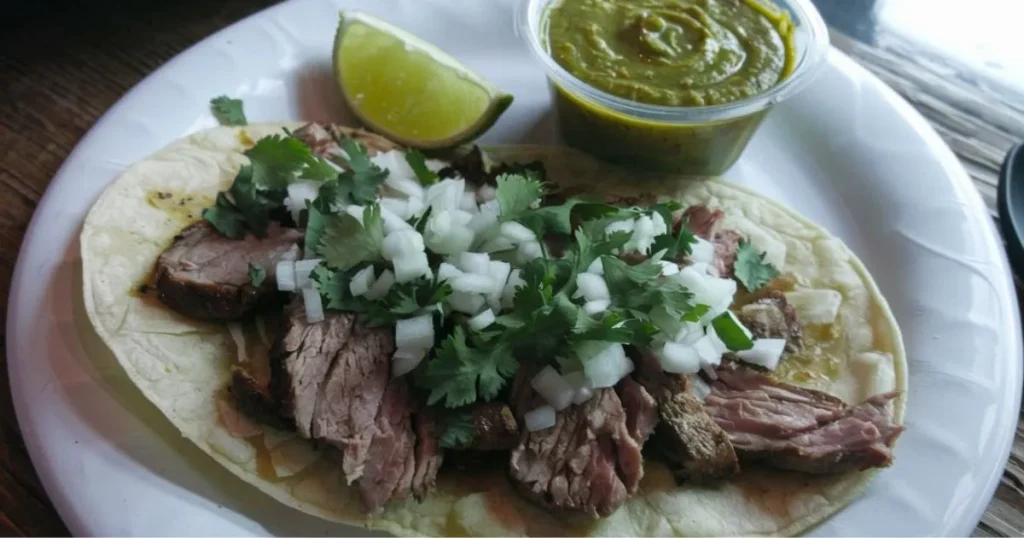
Trimming and preparing for cooking
Taking off the outer skin layer is the trickiest part of tongue preparation. This usually happens after cooking, but you have options:
You can freeze the raw tongue first to slice away the skin with a sharp knife. Some chefs will give it a quick blast with a blowtorch to make peeling easier.
A large tongue might work better cut into 2-3 pieces before cooking. This makes it easier to handle and cooks faster. The way you place the tongue in your cooking pot will give you even heat distribution through this dense muscle.
The front (anterior) part has more protein and less fat than the back (posterior) section. This affects both its nutrition and texture. The anterior region also contains more polyunsaturated fatty acids and fewer saturated fats.
Master Recipe: How to Make Tacos de Lengua Step-by-Step
A beef tongue can seem daunting at first, but the cooking process will reshape the scene and turn it into the star of perfect tacos de lengua. The real magic starts in the kitchen after you select and clean your tongue.
Everything in the braising technique
The right braising method creates that signature melt-in-your-mouth texture. Your tongue needs to sit in a large pot with enough water for complete coverage. The pot should have aromatics—a quartered onion, 4-5 crushed garlic cloves, 1-2 bay leaves, and a tablespoon of peppercorns. Many chefs add fresh cilantro or thyme to enhance the flavor.
The water should reach a gentle simmer (never a rolling boil) under a tight-fitting lid. Your tongue will need about 3 hours to braise. You’ll know it’s done when a fork slides in easily. The tongue should stay submerged throughout cooking, so add hot water as needed.
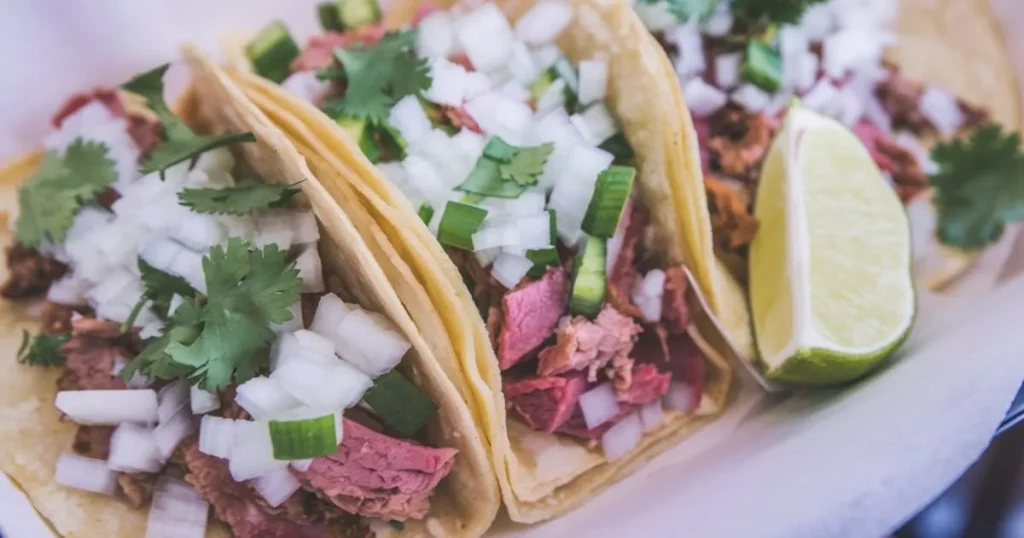
Peeling and slicing methods
Take the tongue out and let it cool slightly—but don’t wait until it’s completely cool. The outer membrane must come off while still warm or removal becomes almost impossible. Your fingers and a small knife will help pull away the thick skin-like covering from the tongue’s base.
The peeled tongue should be sliced into ¼-inch pieces crosswise. These slices need to become strips and then small, bite-sized cubes. This consistent size will give you an even browning and perfect texture in every taco.
The perfect sear
A cast-iron skillet needs 2-3 tablespoons of oil or lard over medium-high heat until it shimmers. The diced tongue pieces should cook for 5-8 minutes. Stir them occasionally until they develop a rich brown crust everywhere. This step creates an amazing contrast—crispy outside with tender inside.
Quick assembly guide
Corn tortillas should toast on a hot comal or skillet until air pockets appear with light char marks. A clean kitchen towel will keep them warm. Each taco needs:
- A generous spoonful of seared tongue in the center of a warm tortilla
- Salsa verde or chile de árbol sauce on top
- Diced onion, fresh cilantro, and a lime squeeze to finish
The tender meat combines with spicy salsa and fresh toppings to create that perfect balance that makes tacos de lengua a favorite dish.
Troubleshooting Common Lengua Taco Problems
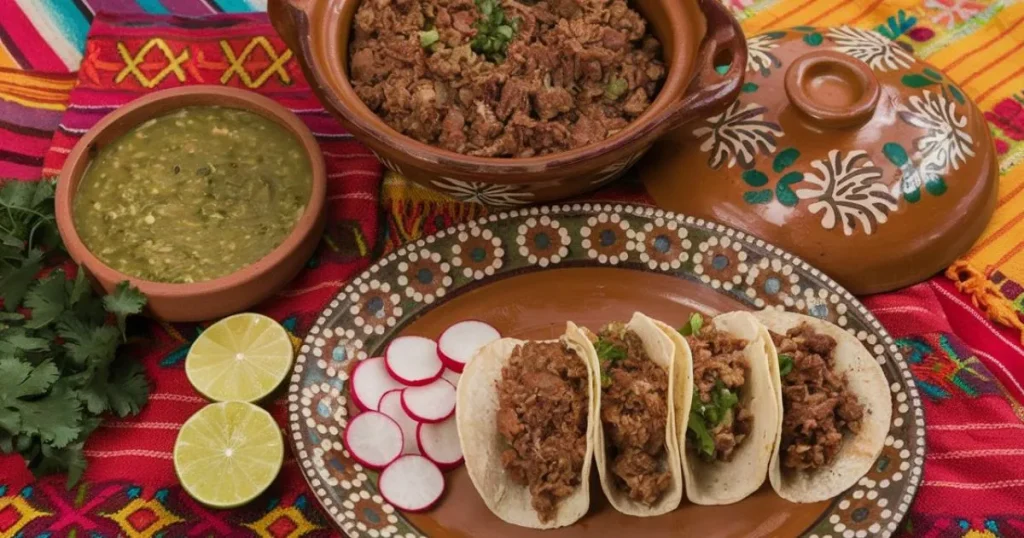
Even seasoned vaqueros face challenges while making tacos de lengua. Here are the most common problems and ways to fix them.
Fixing tough or rubbery tongue
The meat becomes tough because of wrong cooking methods. The beef tongue consists of solid muscle with connective tissue that needs low, slow heat to break down well. Your tongue feels rubbery because it hasn’t cooked enough. The best solution is to put it back in the braising liquid and cook until a fork slides through easily. Some cuts need an extra hour of cooking time. A pressure cooker can speed up the tenderizing process.
The outer membrane peels off best while the tongue is hot. This task becomes harder and could lead to poor texture if you wait until the meat cools down.
Dealing with gamey flavors
The tongue can sometimes develop strong, gamey flavors. Soaking it in milk overnight helps. Milk’s lactic acid and sugars create chemical changes in the meat that remove unwanted tastes. You can also use acidic marinades with wine, orange juice, or teriyaki sauce. These ingredients mask gameness and make the meat tender.
Salt is vital in reducing gamey flavors. It denatures proteins and blocks bitter taste receptors. Adding salt to your braising liquid makes a big difference.
Rescuing dry or overcooked meat
Your overcooked or dry tongue can still be saved. The meat’s internal fat content helps you refresh it through:
- Quick searing in hot oil to melt the fat and create a crispy crust
- Fine chopping to minimize tough texture
- Adding tasty sauces or salsas for moisture
The final heating step brings out tongue meat’s best qualities. The rendered fat creates a golden crust that makes even slightly overcooked meat delicious. Good assembly techniques help too. A thin layer of refried beans or melted cheese adds moisture and binds dry filling together.
Elevating Your Tacos de Lengua: Sauces and Accompaniments
The magic of tacos de lengua goes way beyond the meat itself. A tangy salsa verde, spicy chile de árbol sauce, fresh garnishes, and smart drink choices can reshape the scene from good lengua tacos to an unforgettable street food experience.
Classic salsa verde recipe
Salsa verde and tacos de lengua go together perfectly. This green sauce balances the rich, tender meat beautifully. Here’s how to make an authentic version:
Start by boiling 6-8 tomatillos and 2-3 serrano peppers (adjust heat to taste) for 12-15 minutes until tomatillos turn medium dark green. Save ¼ cup of cooking liquid after draining. Blend everything with one garlic clove, chopped white onion, and fresh cilantro to a slightly chunky texture. Add salt and the saved cooking liquid to get the right thickness.
You might want to try roasting half the tomatillos under a broiler until they get splotchy black marks. Blend these with fresh tomatillos to create a unique roast-sweet and crunchy-fresh combination.
Spicy chile de árbol sauce
This golden-orange sauce packs intense heat and complex flavor. Toast dried chile de árbol peppers in hot oil for 1-2 minutes. Stir them until their color changes. Add onion and garlic, then fry for 2 more minutes. Blend with canned whole tomatoes, tomato sauce, and salt until smooth with visible chile specks.
This velvety sauce drizzles perfectly over lengua tacos. Its rich color stands out beautifully against the meat and fresh garnishes.
Fresh toppings that balance the rich meat
These fresh garnishes make authentic tacos de lengua complete:
- Cilantro: Each bite gets a burst of herbaceous freshness
- White onion: Brings crunch and sweet-sharp flavor
- Lime wedges: Cuts through the rich meat with bright acidity
- Avocado slices: Adds creamy texture and subtle flavor
- Radish slices: Gives peppery crunch and visual appeal
Beverage pairings for the complete experience
Street food roots aside, tacos de lengua deserve great drink pairings. Wine lovers should reach for Tempranillo or Malbec – their body and spice notes match the deep lengua flavors perfectly. Brunello di Montalcino works surprisingly well too. Its high acidity handles heat while complex flavors match the meat’s richness.
Some unexpected but great choices include off-dry fruit-forward wines with a touch of acidity, West Coast IPAs (citrus hops match salsa verde beautifully), or sparkling wine that refreshes your palate between bites.
Conclusion
Creating perfect tacos de lengua takes patience and careful attention, but every minute spent is worth it. My years as a street food vendor taught me that success comes from giving each step its due respect. Quality tongue selection at the market and achieving that final golden sear are essential parts of the process.
The dish comes alive when the tender, perfectly cooked lengua meets fresh, bright toppings and spicy salsas. Well-prepared tongue provides enough meat to feed a crowd. Fresh garnishes turn these simple tacos into unforgettable street food moments.
These tacos de lengua are more than just another variety. They showcase Mexican cuisine’s artistry through meticulous preparation and balanced flavors. The sizzle of the griddle and the smell of fresh tortillas will transport you to Mexico’s vibrant streets. Each bite tells stories of tradition and taste, whether you serve them at family gatherings or casual dinners.
FAQs
Q1. How can I enhance the flavor of my tacos de lengua? To elevate your tacos de lengua, add fresh toppings like cilantro, diced white onion, and lime wedges. Serve with a tangy salsa verde or spicy chile de árbol sauce. For added texture, include sliced avocado and radishes. These accompaniments balance the rich meat and create a more complex flavor profile.
Q2. What’s the proper cooking time for beef tongue? Beef tongue typically requires 3-4 hours of gentle simmering to achieve the perfect tenderness. Place it in a pot with water, aromatics like onion and garlic, and simmer until you can easily pierce it with a fork. The low, slow cooking process is crucial for breaking down the connective tissue and achieving that melt-in-your-mouth texture.
Q3. How do I prepare the beef tongue before cooking? Start by thoroughly rinsing the tongue under cold water. Some chefs recommend soaking it in cold water for 2-3 hours or adding vinegar, salt, or lemon juice to the washing water. Trim any visible fat or gristle. The outer skin layer is typically removed after cooking, but some prefer to freeze the raw tongue first to make peeling easier.
Q4. What’s the best way to achieve a crispy exterior on the cooked tongue? After braising and slicing the tongue into small, bite-sized cubes, heat oil or lard in a cast-iron skillet over medium-high heat. Add the tongue pieces and cook for 5-8 minutes, stirring occasionally, until they develop a rich brown crust on all sides. This final sear creates a delicious textural contrast with a crispy exterior and tender interior.
Q5. What are some good beverage pairings for tacos de lengua? For wine lovers, Tempranillo or Malbec complement the deep flavors of lengua well. Surprisingly, Brunello di Montalcino also pairs nicely, with its high acidity cutting through the heat of the dish. For beer enthusiasts, a West Coast IPA can be a great match, as the citrus hops pair beautifully with salsa verde. Alternatively, sparkling wine can refresh the palate between bites.

